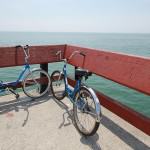With my father and two dear elderly friends dying in the past month, I’m thinking a lot about end-of-life care. Living in India, this report does nothing to reassure me.
In a White Paper done by the Economist Intelligence Unit, 80 countries were ranked on quality and affordability of care available to dying people, skill and number of staff and the quality of hospital and hospice environments. It also considered public awareness about end-of-life issues and options for care.
In every ranking, India came close to the bottom. Not only are most hospitals abysmal in quality and affordability; not only are many nurses and doctors callous and lacking in any kind of bedside manner – there is also a reluctance to discuss or even acknowledge death, even when it is staring us in the face. The dying person must be protected at all costs from any awareness of her condition in India. This makes it difficult, if not impossible, to have what Dr Atul Gawande, a surgeon and public health researcher, calls The Conversation.
“The Conversation” is a series of open, honest discussions people have with their families and loved ones to share their fears, hopes and wishes for their final days. These talks happen over days, weeks, sometimes longer. They give people a chance to express their love, their regrets, their apologies, their parting words of advice or forgiveness. They seem to be essential for a peaceful, happy death. But they can only happen if we are able to admit that death is inevitable.
My father died in America and one of my two friends died in Dubai; both were surrounded by loved ones and both had superb care at the end.
The third died here in India. She, too, had a peaceful and dignified death, at home, surrounded by her family and attended round-the-clock by people who loved her. But that was solely due to the courage and creativity of her children and their determination to honor her wishes and save her from the clutches of the Indian medical system.
Auntie had had a stroke at around 10 in the morning. An ambulance was at the house within 15 minutes and we had her in the hospital by a little before 11. In spite of being educated, confident and insistent; in spite of having pull in the hospital and the money to afford whatever was needed, her family simply could not move the system. The ER doctor was a glorified intern, incapable of making any medical decision and afraid, it seemed to contact the attending physician. The neurologist was on rounds. His phone was switched off. No one else was available. Precious hours were lost. When the doctor finally did arrive, he admitted that the window of opportunity had closed. There was nothing they could do but wait and watch.
The next few days were an ICU-induced nightmare. Auntie was now in a coma. Without asking her children for permission, a feeding tube was put in and a drip set up. The hospital was dirty, yet Gestapo like rules limited their access to their mother to five-minute visits twice a day because of fear of “infection.” And while the doctors were candid that her condition was hopeless, they could not officially recommend taking her home.
“How will you manage her care?” they pointed out. “You have no medical background.”
As it happens, I do. Well, sort of. Living in India has made me resourceful. Given Moy Moy’s complex medical needs, I have learned how to give injections, insert and remove feeding tubes and catheters, nebulize and extract secretions and wastes. The adult human body doesn’t alarm me, even when it is falling apart.
“Let’s bring her home,” I said to my friends. “We can manage.”
Over the next few days, with long-distance support from my sister and brother-in-law, both doctors, and a good friend who is a hospice nurse with decades of experience with the dying, we made Auntie’s final journey a tribute to her long life of independence and dignity. Her brother came from Jaipur; her son and daughter-in-law arrived from Mumbai. Friends, relatives, neighbors came in and out all day and late into the evening, whispering messages of love and comfort. Her granddaughter slept beside her every night; combed her hair, placed flowers where she might see them if she opened her eyes.
We managed any pain with Valium and Morphine, procured by a sympathetic local doctor who nonetheless warned us not to tell a soul that he had been involved. My US hospice team talked us through every stage of the journey, telling us what to expect and how to handle it. They calmed us when things got frightening with an assurance born out of the wisdom of many years spent facing death and helping people to go through it.
When Auntie finally slipped away, it felt right and natural and we felt privileged to have been witnesses to it. But we were also deeply aware of how hard won her death had been. Had her family not been so courageous, had we not had hospice advice, had I not happened to be able to provide the medical support, she would probably have died alone in an ICU, her family far away from her in an overcrowded smelly corridor. She would have been struggling at the end to hold on to her sense of herself, possibly in pain, wondering where her children were and why this was happening to her.
 It’s an experience too many people have at the end of their lives in India. It needn’t be so. Hospice care is not expensive or complicated. It requires compassionate knowledge and a willingness to accompany a dying person on her final journey in a spirit of openness and trust.
It’s an experience too many people have at the end of their lives in India. It needn’t be so. Hospice care is not expensive or complicated. It requires compassionate knowledge and a willingness to accompany a dying person on her final journey in a spirit of openness and trust.
Done well, death can be a beautiful and liberating experience, a chance for families to come together and to heal, to share memories and hope, to embrace both the past and the future and to complete the great circle of life. Interestingly, the doctors and nurses in the ICU understood this and many of them told Auntie’s children movingly and with profound sympathy that they were doing the right thing by taking her home, even though it was clear what taking her home meant.
Kerala has pioneered a palliative care movement which is a beacon of hope for India. The Institute of Palliative Medicine is just one such institution in the state – it runs certificate courses for doctors and nurses in hospice care, pain management and emotional support for the dying and it equips community volunteers – after a short, practical training – to provide spiritual, social and physical support to the dying. Local donations pay for more than half the program; the government covers the rest.
It’s a start. It’s also a reminder. This is one issue we all have a stake in. Because not one of us is getting out of here alive.




Very true Jo didi.